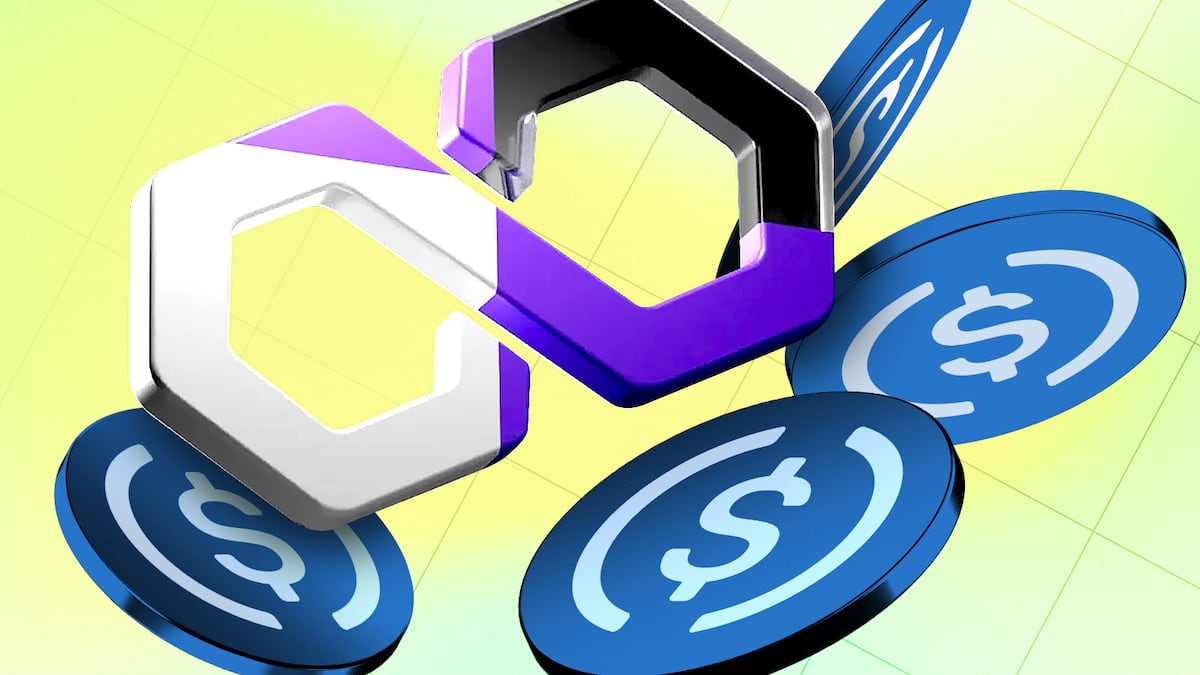- Polygon is beating other blockchains in small USDC transfers.
- Rising fees on competitor Tron is helping.
- Polygon's overall stablecoin trading volume is still comparatively small.
Small peer-to-peer USDC transfers on Polygon have surged 141% this year as the firm behind the blockchain looks to compete in the hyper-competitive payments sector.
Polygon now beats Solana when it comes to handling the highest portion of USDC transfers up to $1,000 in size, according to data compiled by Peter Liem, an analyst at Polygon Labs.
Expansion of the stablecoin market coupled with rising fees on competitor blockchains have contributed to the growth, Aishwary Gupta, global head of payments and RWAs at Polygon Labs, told DL News.
“The fees on Tron have been rising tremendously, so people are looking at alternatives,” Gupta said.
Transaction fees
Tron is the biggest blockchain for stablecoins accounting for 60% of all trading volume, according to a May report from crypto data platform Artemis. However, transaction fees on the network have more than doubled in recent months.
Transfers of USDT, the biggest stablecoin on Tron, used to cost around $3.30 a year ago.
Now they’re over $7.
Transfers of USDC on Polygon currently cost just a fraction of a cent in comparison.
The increased fees aren’t an issue for wealthy users who regularly push around hundreds of thousands of dollars.
But they’re a big problem for those in developing nations and countries with unstable currencies, who regularly use stablecoins for small everyday payments.
Stablecoin surge
The rising fees on Tron have created a gap in the market, showing that there’s still room for smaller players like Polygon to compete.
Since the start of the year, the stablecoin market has expanded 27% to an all-time high of $262 billion.
It comes as Wall Street warms to stablecoins and the speed and efficiency increases they confer on the back of key US legislation designed to regulate dollar-pegged cryptocurrencies.
Standard Chartered forecasts the stablecoin market will hit $2 trillion by 2028, while Bernstein predicts that the sector could grow to around $4 trillion over the next decade.
JPMorgan Chase, Bank of America, and Citigroup are all poised to integrate dollar-backed stablecoins into their product offerings and payment systems.
South American growth
Yet it’s not Wall Street, but South America where Polygon is seeing a big increase in stablecoin users.
Gupta attributed much of the recent growth to users in the region, particularly in Argentina and Brazil.
Users in these countries were already using Polygon for stablecoin transfers, he said. So when the fees on Tron increased, many of them switched to using Polygon as their primary blockchain.
Polygon launched in October 2017 and was among the first cohort of blockchains to offer cheaper transactions than Ethereum.
Because Polygon has been operating for a long time, Gupta said, many payment providers in places like Argentina and Brazil are already set up to send and receive funds on the blockchain.
Almost 50% of all stablecoin transfers in Argentina use USDC, according to Artemis. That’s significant, because Tether’s USDT accounted for over 75% of volume in most other countries.
Liem’s data showed Polygon handled $562 million worth of USDC transfers under $1,000 in June, in line with the data in Artemis’ report.
Payments push
Polygon is trying to reinvent itself as a blockchain for stablecoin payments and tokenised versions of real-world assets, such as US Treasury bonds.
In June, it published a new roadmap with plans to increase its transaction bandwidth, and encouraged decentralised finance apps to move over to a new, separate blockchain called Katana.
Gupta said he has assembled a team of 14 people working exclusively on driving payments growth.
“If you look at other places, like any other chain, I can guarantee you that nobody on the payments side is pushing that much,” he said.
Gupta said he and his team are also exploring commercial opportunities and ensuring that they can provide dedicated support for future payments clients.
While the payments push appears to be working, Polygon still has a long way to go.
The blockchain currently hosts around $2.8 billion worth of stablecoins, per DefiLlama data.
Tron, on the other hand, has over $81 billion.
Tim Craig is DL News’ Edinburgh-based DeFi Correspondent. Reach out with tips at tim@dlnews.com.







